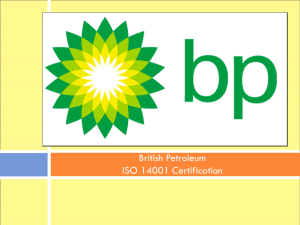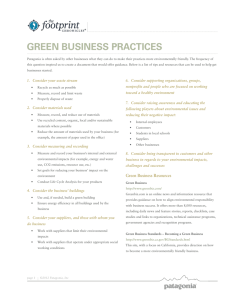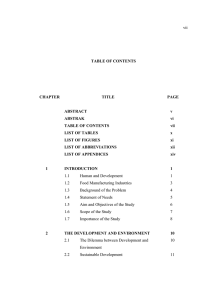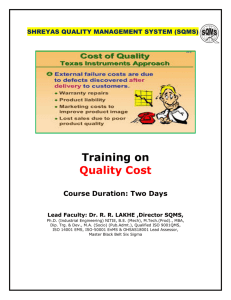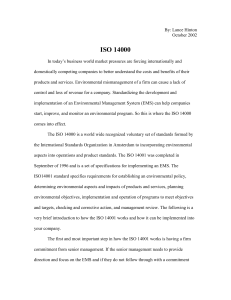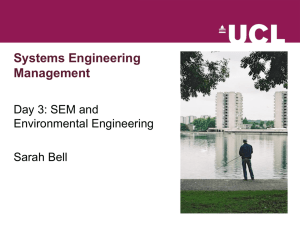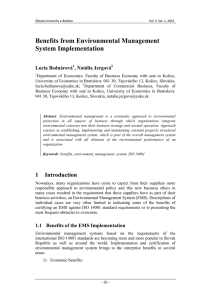Environment Management
advertisement
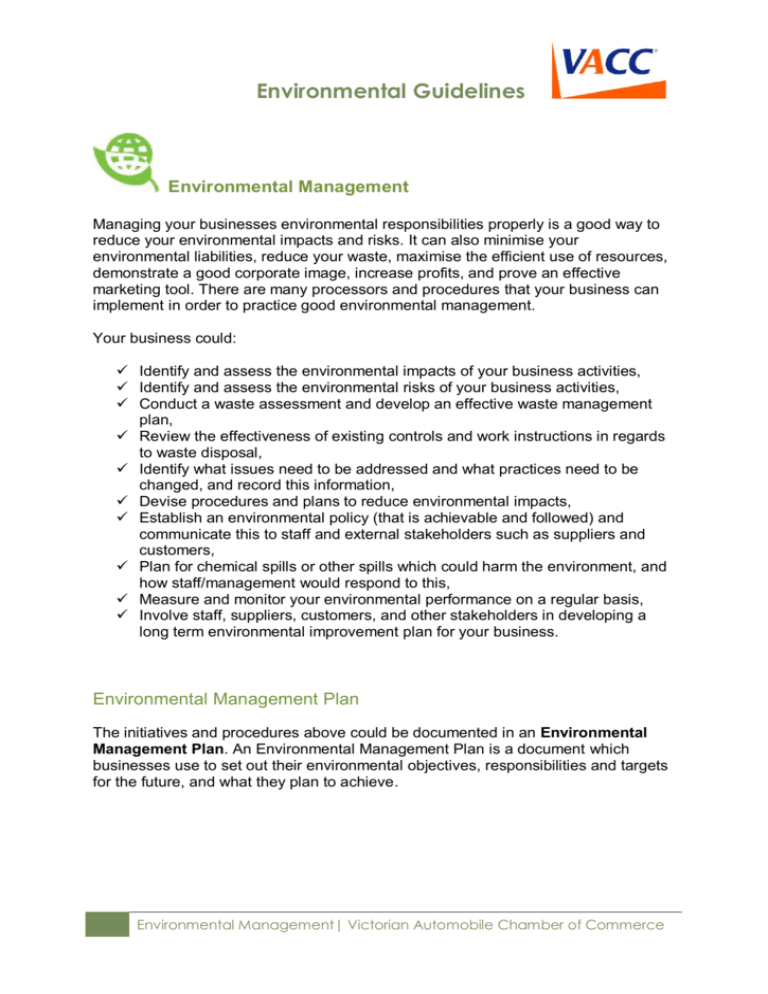
Environmental Guidelines Environmental Management Managing your businesses environmental responsibilities properly is a good way to reduce your environmental impacts and risks. It can also minimise your environmental liabilities, reduce your waste, maximise the efficient use of resources, demonstrate a good corporate image, increase profits, and prove an effective marketing tool. There are many processors and procedures that your business can implement in order to practice good environmental management. Your business could: Identify and assess the environmental impacts of your business activities, Identify and assess the environmental risks of your business activities, Conduct a waste assessment and develop an effective waste management plan, Review the effectiveness of existing controls and work instructions in regards to waste disposal, Identify what issues need to be addressed and what practices need to be changed, and record this information, Devise procedures and plans to reduce environmental impacts, Establish an environmental policy (that is achievable and followed) and communicate this to staff and external stakeholders such as suppliers and customers, Plan for chemical spills or other spills which could harm the environment, and how staff/management would respond to this, Measure and monitor your environmental performance on a regular basis, Involve staff, suppliers, customers, and other stakeholders in developing a long term environmental improvement plan for your business. Environmental Management Plan The initiatives and procedures above could be documented in an Environmental Management Plan. An Environmental Management Plan is a document which businesses use to set out their environmental objectives, responsibilities and targets for the future, and what they plan to achieve. Environmental Management| Victorian Automobile Chamber of Commerce Environmental Guidelines Environmental Management System Implementing an Environmental Management System (EMS) to ISO 14001 can also benefit your business. An EMS will provide a thorough, systematic and methodical approach to planning, implementing and reviewing your business’s response to environmental impacts and issues. An EMS will also help to ensure that your business remains compliant with their legal obligations under Victorian law and Commonwealth law. It will also provide a tool in helping your business to continually improve in environmental management. Some of the areas that your business can manage in an EMS include water consumption, waste management, energy consumption and green purchasing. Further Information Department of Environment, Water, Heritage & the Arts http://www.environment.gov.au/land/management/ems/index.html International Organization of Standardization (ISO) http://www.iso.org/iso/iso_catalogue/management_standards.htm © VACC Green Stamp Plus Issue date: November 2010 Note: This Good Practice Guideline is not a complete statement of law relevant to this topic. Further legal advice must be sought if complete information is required. Environmental Management| Victorian Automobile Chamber of Commerce


